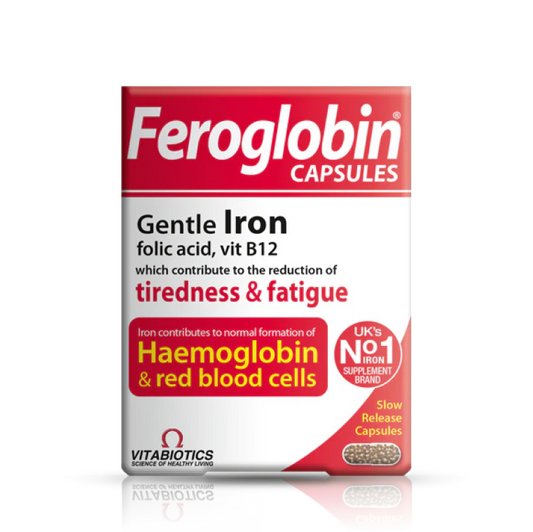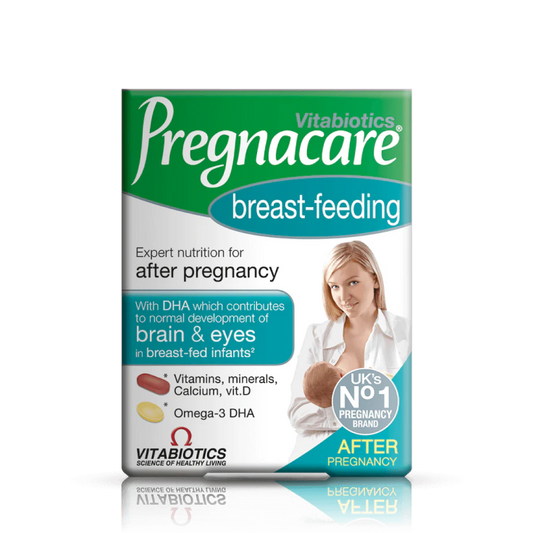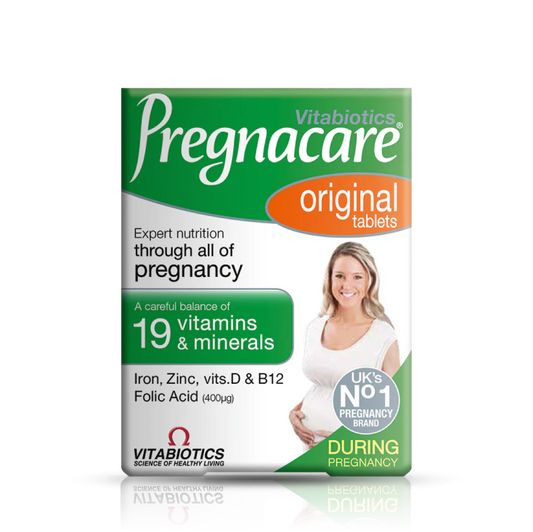In today's world, where taking care of health and nutrition plays a key role, we increasingly come across terms such as omega-3 and omega-6 acids. Although both types of fat are extremely important for our body, we often focus mainly on the former. However, it is worth taking a closer look at omega-6 acids, understanding what they are, what functions they perform, and why they are essential for our health.
Introduction to Omega-6 Fatty Acids
What are omega-6 fatty acids?
Omega-6 fatty acids are a group of fats that belong to the larger family of polyunsaturated fatty acids (PUFAs) . The name "omega-6" refers to the specific location of the first double bond in their chemical structure - it is located at the sixth carbon atom from the methyl end of the fatty acid chain.
Importantly, omega-6 fatty acids are classified as essential fatty acids (EFAs). This means that our bodies cannot produce them on their own and we must obtain them through food . Together with omega-3 fatty acids, which are also essential polyunsaturated fatty acids, they play a key role in the proper functioning of our bodies, influencing, among other things, brain function and proper growth and development. Polyunsaturated fatty acids, which include omega-6, are characterized by the presence of more than one double bond in their carbon chain, which gives them specific physical and chemical properties.
The fact that omega-6 fatty acids are essential polyunsaturated fatty acids underscores their fundamental role in maintaining human health. The inability of the body to synthesize them makes their regular dietary intake essential. This basic understanding of the classification and definition of omega-6 fatty acids is key to further exploring their importance to our bodies.
Why are omega-6 fatty acids important for health?
Omega-6 acids perform a number of important functions in our bodies. They contribute to skin and hair growth, help maintain healthy bones, regulate metabolic processes and support the proper functioning of the reproductive system .
In addition, omega-6 fatty acids are important structural components of cell membranes, influencing their fluidity, elasticity and permeability. They also play a role as precursors of bioactive lipid mediators, such as eicosanoids, which participate in many physiological processes, including inflammatory and immune responses. Like other fats, omega-6 fatty acids provide our body with the necessary energy for proper functioning.
See also: How to care for your hair with supplements?
The importance of omega-6 fatty acids goes beyond simple energy provision. Their involvement in the structural integrity of cells, hormonal regulation, and the production of signaling molecules underscores their broad impact on maintaining health and preventing disease.
The main types of omega-6 acids and their characteristics
Linoleic acid (LA) – characteristics and role
Linoleic acid (LA) is the primary omega-6 fatty acid in our diet and is considered the "parent" of the entire omega-6 family. Its chemical name is all-cis-9,12-octadecadienoic acid (18:2n-6). At room temperature, it takes the form of a colorless or straw-yellow liquid.
LA is found abundantly in a variety of vegetable oils, nuts, and seeds . As an essential fatty acid, it cannot be synthesized by the human body, making its dietary intake necessary.
In our body, LA is converted into other omega-6 fatty acids, primarily gamma-linolenic acid (GLA) and arachidonic acid (AA). This process involves a series of desaturation and elongation reactions.
Linoleic acid plays a significant role in supporting heart health by helping to lower levels of “bad” LDL cholesterol and improving blood pressure. Replacing saturated fats with linoleic acid has been shown to be associated with a reduced risk of coronary artery disease.
It is also crucial in maintaining the skin's water permeability barrier and its proper hydration . LA is an important component of ceramides in the skin. In addition, it may have anti-inflammatory properties and can be metabolized to compounds with such effects.
The primary role of linoleic acid as the major dietary source of omega-6 and its metabolic conversion to other important fatty acids in this family underscore its central importance. The benefits of its consumption for cardiovascular and skin health attest to its diverse physiological importance.
Arachidonic acid (AA) – characteristics and role
Arachidonic acid (AA), also known as ARA, is a long-chain omega-6 fatty acid with 20 carbon atoms and four cis double bonds (20:4n-6) . At physiological pH, it exists mainly in the ionized form – as arachidonate. At room temperature, it is an oily liquid.
Although the body can synthesize AA from linoleic acid, the rate of this conversion is usually low. Therefore, its dietary intake is also important.
AA is found mainly in animal products such as meat, poultry, fish and eggs.
Arachidonic acid is a key precursor of eicosanoids, a group of signaling molecules that play a significant role in inflammation, blood clotting, immune responses, and maintaining homeostasis . These eicosanoids can exert both pro-inflammatory and anti-inflammatory effects.
It is also an essential structural component of cell membranes , and is particularly abundant in the brain, muscles, and liver, contributing to the fluidity and function of these membranes. AA is involved in early neurological development in infants. Studies suggest it may play a role in cognitive function, and has shown potential benefits in improving cognitive function in older adults and children with autism.
Although derived from LA, arachidonic acid has distinct dietary sources and more direct involvement in inflammatory processes and brain function. Its role as a precursor to both pro- and anti-inflammatory eicosanoids underscores the complexity of its health effects.
Other important omega-6 acids (GLA, DGLA)
Gamma-linolenic acid (GLA) is an 18-carbon omega-6 fatty acid (18:3n-6) that is produced in the body from linoleic acid by the action of the enzyme delta-6 desaturase. GLA is found in several vegetable oils, including evening primrose oil, borage oil, and blackcurrant seed oil. Interestingly, GLA may have anti-inflammatory properties, and when taken as a supplement, it is largely converted to dihomo-gamma-linolenic acid (DGLA), which also has anti-inflammatory effects.
Dihomo-gamma-linolenic acid (DGLA) is a 20-carbon omega-6 fatty acid (20:3n-6) that is formed by the elongation of GLA. Like GLA, DGLA is considered an anti-inflammatory fatty acid and can be a precursor to both pro-inflammatory and anti-inflammatory eicosanoids, although it often leads to the formation of less inflammatory products than AA.
See also: Omega-9 acids
While LA and AA are the most talked about, GLA and DGLA are other important omega-6 fatty acids with specific roles, especially in modulating inflammation. Their presence in some vegetable oils offers alternative dietary sources of omega-6 beyond the more common LA-rich oils.
Main Food Sources of Omega-6 Fatty Acids
Vegetable oils rich in omega-6
Vegetable oils are one of the richest sources of omega-6 fatty acids in our diet, specifically linoleic acid:
- Soybean oil - is a significant source, containing about 50 grams of omega-6 per 100 grams of product
- Corn oil - is also rich in these fats, providing about 49 grams per 100 grams
- Sunflower oil - contains about 49.89 grams per 100 grams. There are also high-oleic versions of this oil
- Safflower Oil - is particularly rich in omega-6, with some sources indicating around 12.7 grams per tablespoon (around 90 grams per 100 grams)
- Grapeseed oil - is also a good source, with about 70% of the fatty acids being linoleic acid
- Other vegetable oils - such as sesame oil, peanut oil, rapeseed oil and avocado oil also contain significant amounts of omega-6 fatty acids.
Vegetable oils are the most concentrated dietary sources of omega-6 fatty acids , primarily linoleic acid. Their widespread availability and use in cooking and food production contribute significantly to the high intake of omega-6 in many Western diets.
Nuts and seeds
When it comes to the omega-6 content of nuts and seeds, the following are certainly worth mentioning:
- Walnuts - are a rich source, containing about 37 grams of omega-6 per 100 grams
- Sunflower seeds - contain about 34 grams per 100 grams
- Almonds - provide about 12 grams per 100 grams
- Cashew nuts - contain about 8 grams per 100 grams
- Hemp seeds - are also a good source, with about 27.36 grams per 100 grams
- Other Nuts and Seeds - Containing omega-6s include pine nuts, sesame seeds, pumpkin seeds, pecans, pistachios and Brazil nuts. Peanuts and peanut butter also contribute to your omega-6 intake.
Nuts and seeds are a nutritious way to get omega-6 fatty acids into your diet. Their varied content allows you to make choices based on your dietary needs, and many of them also provide other beneficial nutrients as well as omega-3 fatty acids.
Other sources (meat, eggs)
Meat, including beef, pork, and poultry, contains omega-6 fatty acids , with the amount depending on the animal's diet. Grass-fed animals tend to have a more favorable ratio of omega-3 to omega-6. Eggs, especially the yolks, are a source of omega-6 fatty acids, including arachidonic acid. Tofu, made from soybeans, also contains omega-6. Mayonnaise, often made from vegetable oils, can be a source of omega-6.
Although not as concentrated as vegetable oils, animal products and tofu also contribute to dietary omega-6 intake. The impact of animal feed on the fatty acid profile of meat highlights the importance of considering the origin of these products.
The table below shows the main dietary sources of omega-6 fatty acids and their approximate content:
|
Food source |
Approximate omega-6 content (per 100g) |
|
Soybean oil |
50g |
|
Corn oil |
49g |
|
Sunflower oil |
49.89g |
|
Safflower oil |
About 90g |
|
Walnuts |
37g |
|
Sunflower seeds |
34g |
|
Almonds |
12g |
|
Cashew nuts |
8g |
|
Hemp seeds |
27.36g |
|
Peanut butter |
About 12.3g |
The role and health benefits of omega-6 fatty acids for the body
Impact on heart health
Omega-6 fatty acids, consumed in small amounts instead of saturated fats, may be beneficial for the heart and appear to protect against heart disease. Studies suggest that they may reduce the risk of heart disease and stroke. Replacing saturated fats with omega-6 fatty acids lowers total blood cholesterol levels. Higher blood levels of linoleic acid have been associated with a lower risk of overall mortality, mainly from cardiovascular causes, especially mortality from non-arrhythmic coronary artery disease.
The American Heart Association (AHA) recommends consuming at least 5% to 10% of energy from omega-6 polyunsaturated fatty acids , suggesting that this may reduce the risk of coronary heart disease compared with lower intake. A 2018 review found that increased intake of omega-6 fatty acids lowers serum total cholesterol levels and may reduce the risk of myocardial infarction (heart attack).
Despite some previous concerns, the current scientific consensus, supported by organizations such as the AHA, indicates that adequate intake of omega-6 fatty acids, especially linoleic acid, is beneficial for cardiovascular health, especially when replacing less healthy saturated fats.
Role in brain function
Omega-6 fatty acids, along with omega-3 fatty acids, play a key role in brain function and normal growth and development. Arachidonic acid is one of the most abundant fatty acids in the brain and is important for early neurological development in infants. Animal studies suggest that linoleic acid may be involved in neurotransmission and the response to ischemic brain injury. Arachidonic acid supplementation has been shown to have beneficial effects on cognitive function in some neurological disorders and in elderly patients.
Omega-6 fatty acids, especially AA, are essential for maintaining brain health throughout life, from early development to cognitive function in later years.
Importance for skin and hair
Omega-6 fatty acids support skin and hair growth. Linoleic acid is crucial for maintaining the integrity of the skin barrier, preventing water loss and keeping the skin hydrated. It is an important component of ceramides in the skin. LA has anti-inflammatory properties that may be beneficial for skin conditions such as acne, eczema, and psoriasis. Oils rich in linoleic acid may support hair growth.
Omega-6 fatty acids, especially linoleic acid, play an essential role in maintaining healthy skin and hair by supporting skin barrier function, hydration and reducing inflammation.
See also: How to care for your hair with supplements?
Other potential benefits
Gamma-linolenic acid (GLA) may reduce symptoms of diabetic neuropathy and rheumatoid arthritis (although the evidence is mixed). Conjugated linoleic acid (CLA), another type of omega-6, may help reduce fat mass in humans. Omega-6s are involved in regulating metabolism and maintaining the reproductive system. They also contribute to bone health.
Beyond their primary benefits, some omega-6 fatty acids show potential in managing specific health conditions and supporting various body functions, although further research is often required in this area.
The importance of the ratio between omega-6 and omega-3 acids
Why is balance key?
Omega-3 fatty acids help reduce inflammation, while some omega-6 fatty acids tend to promote it. Low intake of omega-3 fatty acids compared to omega-6 fatty acids may contribute to inflammation and chronic disease. Excessive intake of n-6 polyunsaturated fatty acids with low intake of n-3 polyunsaturated fatty acids is strongly associated with the pathogenesis of many modern diet-related chronic diseases. Omega-6 and omega-3 fatty acids compete for the same enzymes involved in their metabolism. High intake of LA may interfere with desaturation and elongation of ALA (omega-3).
The balance between omega-6 and omega-3 fatty acids is key to managing inflammation in the body. These two types of essential fats have different effects, and an imbalance, especially too much omega-6, can have negative health consequences.
The perfect ratio of omega-6 to omega-3
A healthy ratio of omega-6 to omega-3 appears to be between 1:1 and 4:1. Some experts recommend even lower ratios. The typical Western diet ranges from 15:1 to almost 17:1. It is believed that in primitive populations the ratio was closer to 1:1.
The ideal ratio of omega-6 to omega-3 is a topic of ongoing debate, but most experts agree that the modern Western diet is characterized by a much higher ratio than is considered optimal for health. It is usually recommended to aim for a lower ratio, closer to that of the diets of our ancestors.
How to achieve a healthy proportion in your diet?
To achieve a healthier omega-6 to omega-3 ratio, it is recommended to increase your intake of foods rich in omega-3, such as oily fish (salmon, mackerel, sardines), flaxseeds, walnuts, and chia seeds. You should also limit your intake of vegetable oils rich in omega-6 (such as sunflower, safflower, soybean, and corn oils) and processed foods that contain them. Choose oils with a more balanced omega-6 to omega-3 ratio, such as olive oil or canola oil. In some cases, you may want to consider supplementing with omega-3, especially if your dietary intake is inadequate.
Achieving a healthier omega-6 to omega-3 ratio requires making conscious dietary changes, focusing on increasing your omega-3 intake and reducing your intake of processed foods and some vegetable oils rich in omega-6.
Potential negative effects of excessive omega-6 consumption
Effect on inflammation
Some omega-6 fatty acids, especially arachidonic acid, may promote inflammation by serving as precursors to pro-inflammatory eicosanoids. Excessive consumption of omega-6, especially relative to omega-3, has been linked to increased inflammation and may worsen symptoms in people with arthritis. However, some studies suggest that increased linoleic acid intake does not necessarily increase markers of inflammation in healthy adults. In fact, some studies have shown anti-inflammatory effects of diets higher in linoleic acid compared with diets higher in saturated fat. A diet rich in omega-6 may inhibit the anti-inflammatory and inflammation-dissolving effects of omega-3.
The relationship between omega-6 intake and inflammation is complex and appears to depend on the specific type of omega-6, the overall dietary balance of omega-3s, and individual health status. Although some omega-6s may promote inflammation, the role of linoleic acid is less clear.
Potential links to chronic diseases
A high ratio of omega-6 to omega-3 fatty acids has been linked to an increased risk of cardiovascular disease, obesity, metabolic syndrome, inflammatory bowel disease, rheumatoid arthritis, and Alzheimer's disease. Some studies suggest that a diet high in omega-6 fatty acids may promote the development of breast cancer. A 2025 preclinical study found that linoleic acid specifically increased the growth of triple-negative breast cancer in mice. Diets high in omega-6 fats have also been linked to obesity.
An imbalance in omega-6 to omega-3 intake, with a predominance of omega-6, is associated with an increased risk of various chronic diseases. Although the evidence for the direct harmfulness of omega-6 acids alone is not always clear, the importance of the ratio between them and omega-3 acids is consistently emphasized.
When can excess be harmful?
Excessive consumption of omega-6 fatty acids, especially when the ratio of omega-6 to omega-3 is high, can contribute to increased inflammation and the risk of chronic disease. The modern Western diet, characterized by a high consumption of processed foods containing omega-6-rich vegetable oils and a lower intake of omega-3, often leads to an imbalance in this ratio.
The potential harmful effects of excessive omega-6 consumption are often associated with a concomitant low omega-3 intake, leading to an unfavorable ratio. The prevalence of omega-6-rich vegetable oils in processed foods makes it easy to exceed recommended intake levels without realizing it.
Recommended daily intake of omega-6 fatty acids
Recommendations for different age groups
The recommended intake of linoleic acid (LA), the primary omega-6 fatty acid, varies by age and gender. For adult men aged 19-50, the recommended intake is about 17 grams per day, while for women in the same age range, it is 12 grams per day. LA requirements decrease with age. The American Heart Association (AHA) recommends that 5-10% of calories come from omega-6 fatty acids. The World Health Organization (WHO) recommends an intake of 2.5-9% of energy from omega-6 fatty acids. The average LA intake in the United States for adults aged 19 and older was about 6.7% of energy, or 14.8 grams per day (based on a 2,000-calorie diet), based on data from 2001-2002.
This may be useful to you: Ultra Omega 3-6-9 Omega acids in capsules
The recommended daily intake of omega-6 fatty acids, mainly in the form of linoleic acid, is set by various health organizations and depends on age, gender and overall calorie requirements, usually ranging from 5 to 10% of the total daily calorie intake.
The table below shows the recommended daily intake of linoleic acid (LA) by age and gender:
|
Age group |
Sex |
Recommended LA intake (g/day) |
|
Babies (0-6 months) |
Both |
4.4 |
|
Babies (7-12 months) |
Both |
4.6 |
|
Children (1-3 years) |
Both |
7 |
|
Children (4-8 years old) |
Both |
10 |
|
Children (9-13 years old) |
Men |
12 |
|
Children (9-13 years old) |
Women |
10 |
|
Youth (14-18 years old) |
Men |
16 |
|
Youth (14-18 years old) |
Women |
11 |
|
Adults (19-50 years) |
Men |
17 |
|
Adults (19-50 years) |
Women |
12 |
|
Adults (51+ years) |
Men |
14 |
|
Adults (51+ years) |
Women |
11 |
|
Pregnancy |
13 |
|
|
Breast-feeding |
13 |
Demand in different health states
For overall health, it is recommended to maintain a balance between omega-6 and omega-3, with a ratio of 2:1 to 4:1. Some experts suggest even lower ratios. The average diet provides sufficient omega-6, so supplementation is usually not necessary for most people. People with certain health conditions, such as eczema, psoriasis, arthritis, or diabetes, may consider an omega-6 supplement after consulting a doctor. For heart health, it is important to eat a variety of fish (especially oily fish) at least twice a week, which helps maintain a balance between omega-6 and omega-3.
While most people get enough omega-6 from their diet, it is crucial to achieve a healthy balance of omega-3. Supplementation may be considered for certain conditions under the supervision of a physician.
Current scientific research on omega-6 fatty acids and their impact on health
Latest discoveries and conclusions
A 2024 study found that a higher ratio of omega-6 to omega-3 fatty acids in the blood was associated with a higher risk of all-cause death, cancer, and cardiovascular disease, but at the same time, higher levels of both fatty acids were associated with a lower risk of death. A 2024 study suggested that high levels of both omega-3 and omega-6 fatty acids may protect against various types of cancer. A 2023 meta-analysis found that higher levels of linoleic acid in the blood are associated with a lower risk of cardiovascular disease, stroke, and type 2 diabetes. Studies from 2023 and 2024 continue to examine the complex role of omega-6 fatty acids in inflammation and heart health, with evidence of potential benefits and risks depending on the context and ratio with omega-3 fatty acids. A 2025 preclinical study found that linoleic acid can promote the growth of an aggressive type of breast cancer (triple-negative) in mice.
Recent studies paint a complex picture of omega-6 fatty acids. Although a high ratio of omega-6 to omega-3 fatty acids can be harmful, adequate levels of both omega-6 and omega-3 fatty acids appear to offer protection against cancer and cardiovascular disease. Some studies suggest that specific omega-6 fatty acids, such as LA, have beneficial effects on metabolic and cardiovascular health, while others highlight potential risks in certain contexts, such as certain types of cancer.
Controversies and unresolved issues
There is still controversy about the optimal intake of omega-6 fatty acids and their exact impact on heart health and inflammation. Some studies have found no increased risk of heart disease associated with omega-6 fatty acids and even suggest that they may reduce the risk. More research is needed to better understand the role of omega-6 fatty acids in various aspects of health and disease.
The scientific community is still investigating the optimal intake and health effects of omega-6 fatty acids. Conflicting results and ongoing research underscore the complexity of this area of nutrition and the need for further research to provide clearer guidelines.
Summary and practical tips
Key findings on omega-6 fatty acids
Omega-6 fatty acids are essential polyunsaturated fatty acids important for various bodily functions. The main types are linoleic acid (LA) and arachidonic acid (AA), as well as GLA and DGLA. They are found primarily in vegetable oils, nuts, and seeds, as well as animal products. They play a role in heart, brain, skin, and hair health, and in other processes. A balance between omega-6 and omega-3 fatty acids in the diet is important. Excessive omega-6 intake, especially when omega-3 intake is low, can have negative effects. The recommended daily intake of LA varies by age and gender. Current research continues to explore their complex health effects.
How to ensure adequate supply of omega-6 in your diet?
Include a variety of nuts, seeds, and vegetable oils in your diet. Pay attention to your omega-6 to omega-3 ratio by increasing your intake of oily fish and other sources of omega-3. Limit your intake of processed foods high in vegetable oils that are high in omega-6. Consider using cooking oils with a more balanced omega-6 to omega-3 ratio. If in doubt, consult your doctor or dietitian.










